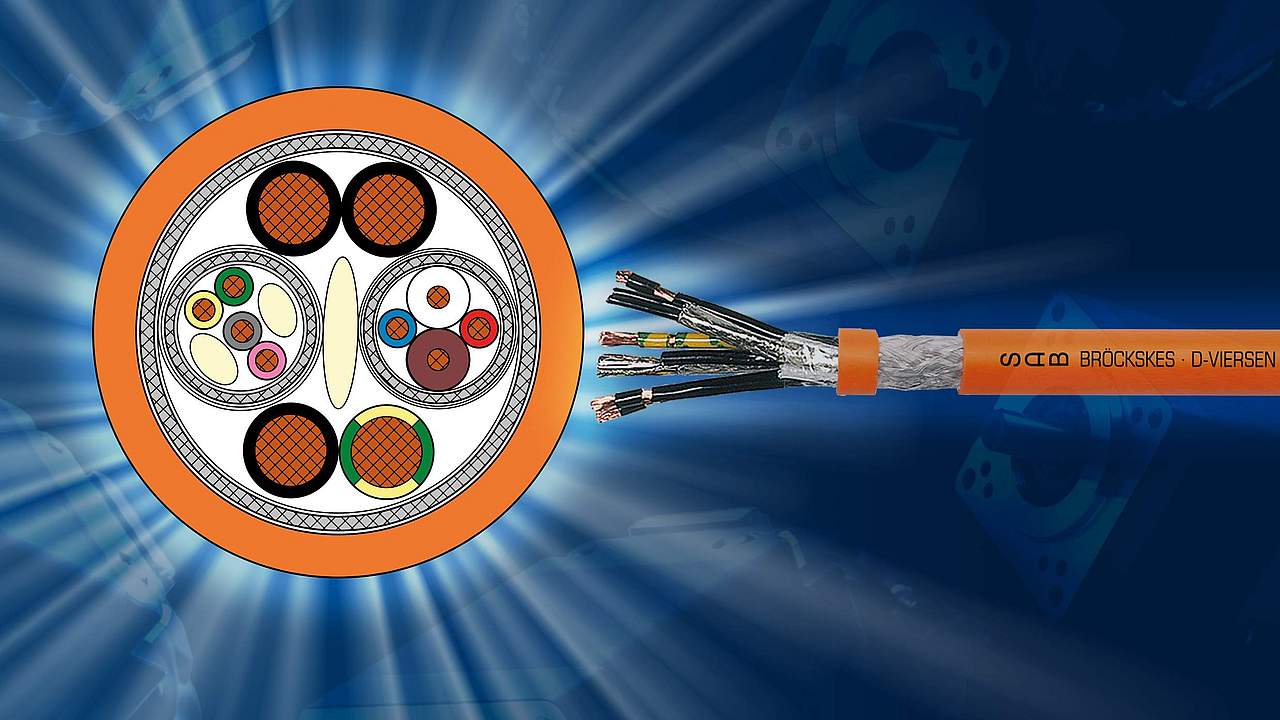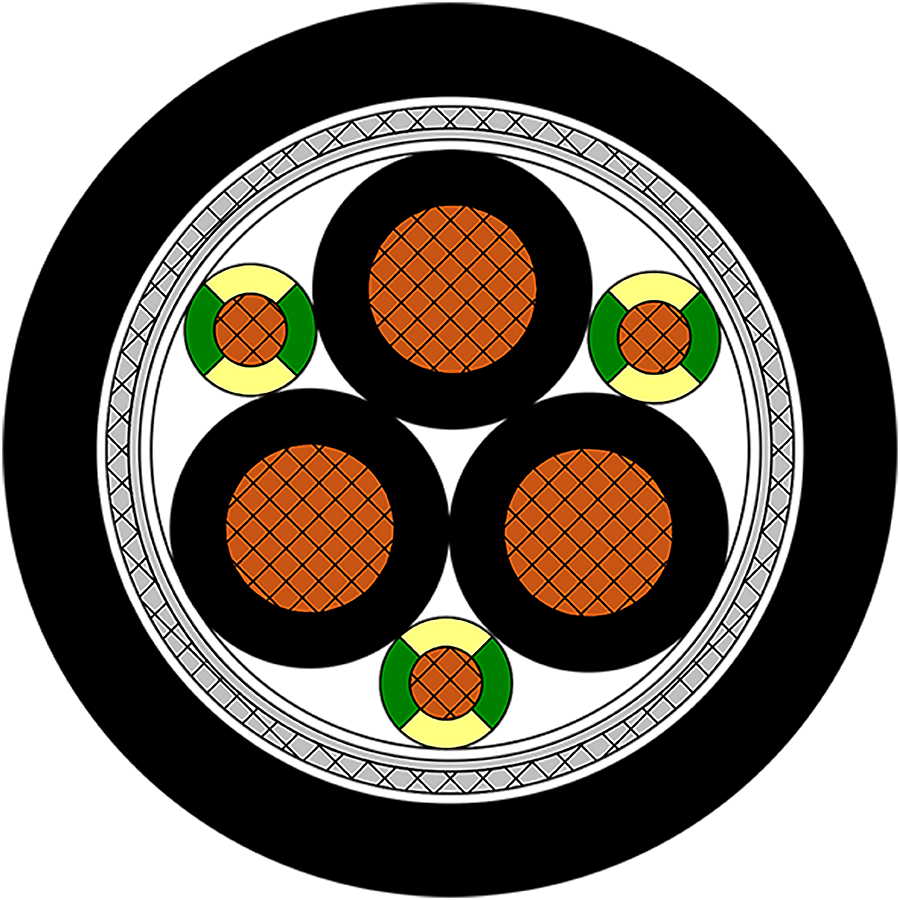In view of the growing volume of data in automation and drive technology, the trend is moving away from classic feedback and resolver cables towards so-called One Cable Technology (OCT). However, the cable design must meet special requirements to ensure interference-free, EMC-protected transmission performance.
In recent years, the use of servo drives in industrial automation has increased significantly, particularly in sectors such as metal, plastics and wood processing. These drive systems require a reliable power supply as well as the continuous recording of operating data such as angle, speed and temperature. Conventional cabling for motors and servo drives requires two plugs, connectors and couplings in addition to one cable each for the power supply and feedback. This doubles the amount of material and installation work, results in higher costs and requires more space.
While installation space is becoming scarcer due to small motors and high packing densities in the switch housings, the transmission rates for automated machine and system control are increasing dramatically in the course of Industry 4.0. Hybrid solutions, which combine not only power supply and control wires but also the feedback signal in a single cable, represent a space-saving, economical alternative.
In order to be able to regulate and control all relevant machine data, manipulated variables and process values, the cabling must guarantee reliable real-time transmission in the gigabit range, even over long distances. This is why such hybrid single-cable solutions require an extremely interference-resistant design protected by double EMC shielding.
Potential disruptive effects
One of the particular challenges in this area is the avoidance of interfering reflections, which can occur particularly with longer cable runs. Furthermore, excessive attenuation can reduce the signal level and impair reliable signal processing. A third potential interference factor for signal transmission is incorrect characteristic impedance. In the worst case, the original signal and the reflection can overlap - with the result that the signal can no longer be evaluated by the end device.
Different standards
Since the introduction of the Hiperface DSL servomotor cables for digital transmission of the feedback signal, various single-cable solutions with integrated Ethernet cable have become established. There is currently no uniform standard for signal transmission, as each servomotor manufacturer uses its own communication protocol. With its low-capacitance hybrid motor connection cable of the SL 875 C series, we offer cabling solutions for SICK HIPERFACE DSL and HEIDENHAIN HMC6. Adaptations to other standards can be produced on this basis as required. The model variant specified for HIPERFACE is available as standard in ten versions with outer diameters from 9.8mm to 24.4mm. In addition, there are four specifications in the HEIDENHAIN standard with diameters from 10.8mm to 15.4mm.
Tight bending radii
The OCT servo cables developed to connect frequency inverters and motors ensure simplified connection technology, reduce cable weight and require less installation space in the drag chain. Particularly robust and hard-wearing cable sheaths are required to ensure that the cables are sufficiently flexible and stable to permanently withstand tight bending radii, even with minimal wire cross-sections of up to AWG 30 - corresponding to a wire cross-section of 0.057 mm2. A minimum bending radius of less than 40 mm is required so that the hybrid motor cables are also suitable for angled installation spaces and narrow cable ducts and can be used for fixed installation within a control cabinet, for example. For highly dynamic applications in drag chains, the bending radius of hybrid single-cable solutions may only be a maximum of ten times the cable diameter.
Low capacity values
In addition, the insulation-related capacitance values must be taken into account for servo cables, which have an increasingly strong effect in frequency inverters due to increasing signal edges, while the compensation must be very compact for reasons of space. The greater the capacity of the cable to store energy, the less energy is conducted to the motor and the more damaging the effect of the reflection wave voltage on the motor. In order to achieve the lowest possible capacity, the classic PVC insulation was replaced by low-capacity insulation materials made of PE or PP. Additional small shielding capacitances guarantee low-loss cable transmission. This solution prevents users from reaching the electrical limits of the inverter system due to poor operating capacities of the cable.
Symmetrical cable structure
For optimum EMC protection, the motor and servo cables manufactured by SAB Bröckskes have double shielding made of braided shielding and an aluminum-laminated PE film. The double shielding ensures interference-free operation of frequency converters. Symmetrical stranding with a split protective conductor reduces inductive coupling. In addition, a symmetrical design with a third protective conductor has improved EMC properties at high power levels compared to a four-core design. Balancing the conductors over the entire cable length and a circular radial connection on the plug are crucial for symmetry. While motor cables must always be earthed on both sides, it must be checked in each individual case for data cables which earthing method causes less coupling.



